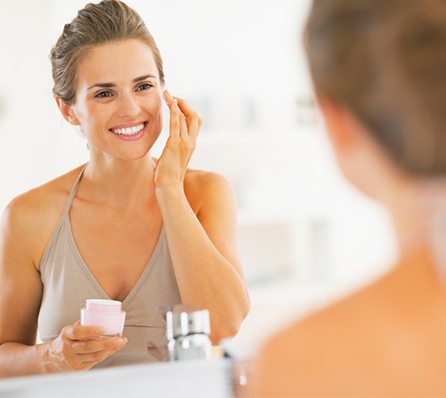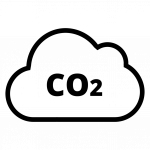With 84,000 chemicals listed as being legally safe to use in food, drugs and cosmetics – yet most of them are seen as questionable – it’s hard to imagine what they are used for and how they came to be considered acceptable in the first place? When you realise most of these ingredients are described as having health concerns. Eg. they are carcinogenic, skin sensitive or endocrine disrupting, it’s even more disturbing to imagine how they get to stay on the market.
Understanding labels on your personal care products, cosmetics and packaged foods seems like you need a science and chemistry degree. And you are not wrong. It is one of the most confusing and sometimes scary challenges you may actually be faced with.
Think about how many times you have picked up a bottle or jar to read the ingredients label only to realise you have no idea what some of them actually are, let alone how to pronounce them? Have you ever questioned why they are even in there? What’s their point?
One of the most common answers questioning safety is, ‘They wouldn’t put it in there if it wasn’t safe!’ How lovely it would be to believe that was true. Trusting everything you read, or believing manufacturers will put health before filling their pockets sadly is not a reality in the food, beauty and cosmetic industries.
 I have a simple strategy when it comes to choosing products I buy. When I pick up any product I instantly turn to the ingredients label, not the nutritional label, not the marketing material but the ingredients. It only takes me a couple of seconds to determine if it is something I will buy or not. There are a number of things I look for.
I have a simple strategy when it comes to choosing products I buy. When I pick up any product I instantly turn to the ingredients label, not the nutritional label, not the marketing material but the ingredients. It only takes me a couple of seconds to determine if it is something I will buy or not. There are a number of things I look for.
With food if I see numbers – especially things like 951 (aspartame) or 621 (MSG) – or words like flavor, colour or preservative it instantly goes back on the shelf. End of story. Non-negotiable. Not bought.
Just to show you how much the context of our food is changing, in the 1960’s there were approximately 500 known food additives. Today there are over 4,500. According to Dr Sarah Lantz – author of Chemical Free Kids – the average person in the USA, UK and Australia consume on average four kilograms of chemicals a year in the form of additives and preservatives. This does not include the pesticide residues in food before processing, nor does it include the leaching of plasticisers (phthalates) into food from plastic tin-can linings and packaging.
When it comes to personal care products it is actually worse. The governing legislation is very unregulated. According to the Environmental Working Group – www.ewg.org personal care products are manufactured with 10,500 unique chemical ingredients. Some of which, as mentioned above are known or suspected carcinogens, toxic to the reproductive system or known to disrupt the endocrine system. Though some companies make products that would be safe to eat, others choose to use dangerous ingredients like coal tar and formaldehyde, both human carcinogens and lead acetate, a developmental toxin.
What to look for in a personal care or cosmetic product
When I pick up a personal care or cosmetic product, again I look at what exactly is in it. To make it easy here are some of the things I look out for as to whether or not I will purchase it.
1. Check the ingredients list. The minute I see chemical words (not botanical names) I am cautious. Things like parabens (methyl, ethyl, propyl, butyl and heptyl), PEG, DEA, TEA, the word perfume or fragrance, or things like benzoate, propylene glycol or sodium lauryl sulphate all of which appear regularly. If I can’t understand a name or use it in my kitchen I put it back. I also figure even if just one of these ingredients is present then the ethics of that company actually do not match mine so I will not purchase and I look for something in line with my values.
2. Use additive cards. It’s hard to remember all the chemicals and ingredients to avoid so this is a fantastic reference. You do not have to do the research but can trust we have done it for you. Get the book ‘The Chemical Maze’ by Bill Statham and ‘Chemical Free Kids’ by Dr Sarah Lantz and subscribe to Skin Deep the cosmetic safety database at Environmental Working Group – www.ewg.org
3. Divide the ingredients list on the label. Narelle Chenery, a good friend and natural skincare advocate from Miessence, says it is good to divide the ingredients list into thirds. The top third usually contains 90-95% of the product. The middle third usually contains 5-8% and the bottom third is approximately 1-3%. Don’t be mistaken if something that is questionable is last. It’s still in there and no one knows the long term accumulation effects of these chemicals.
4. Check for warnings. Look for the consequences of misuse that could be hazardous. For example all products containing halocarbon or hydrocarbon propellants such as aerosol hairsprays and deodorants must disclose the exact warning. Soaps and bubble baths will show a warning ‘may irritate skin’. ‘Keep out of reach of children’ is another common warning. Read them and make sure you know exactly what they are warning you about and then decide if it is a risk worth taking.
5. Be aware of anything that is nature derived. If you see an ingredient like SLS – sodium lauryl sulphate – and in brackets the words – coconut derived, be aware. Pure, unprocessed coconut oil is not SLS. Companies do not have to disclose what chemicals or ingredients are used to refine or process something either.
6. Look for the words chemical-free. And see what else the company stands for and is willing to express. Natural and organic are common phrases that can be overused or misleading. I personally have become a bit cautious of them as they do not necessarily mean what they say or say what they mean. Organic can simply mean an extra carbon molecule. Natural can mean there are some natural ingredients but both can still contain harmful and questionable ingredients. In fact a product only needs 5% of natural ingredients to call themselves natural!
Guest Blogger – Kim Morrison
www.twenty8.com











0 Comments